How can people make good decisions based on limited, noisy information?
FFTrees
An R package to create and profit from fast-and-frugal decision trees.......Or, how I learned to stop worrying and love heuristics.
Nathaniel Phillips, Economic Psychology, University of Basel, Switzerland
SPUDM 2017, Haifa, Israel
Limited Time. Limited information.

## Warning: package 'FFTrees' was built under R version 3.4.1
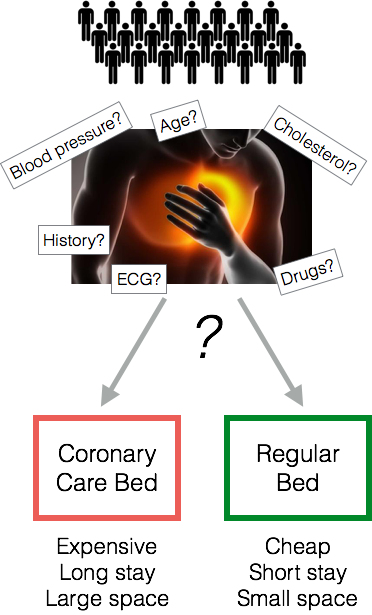
Heart Attack Diagnosis
- How do doctors make decisions? Experience. Intuition. Clinical judgment

- In a Michigan hospital, doctors sent 90% of patients to the ICU, although only 25% were actually having a heart attack.
Emergency Room Solution: a fast-and-frugal tree (FFT)
- A fast-and-frugal decision tree (FFT) developed by Green & Mehr (1997).
- Tree cut the false-alarm rate in half
- Tree is transparent, easy to modify, and accepted by physicians (unlike regression).
What is a fast-and-frugal decision tree (FFT)?
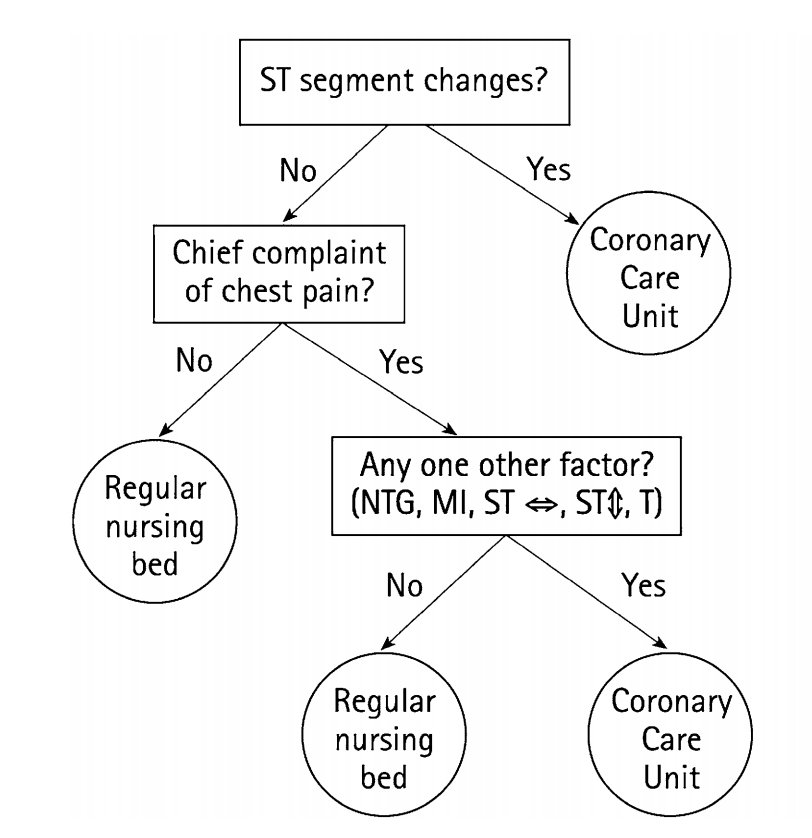
Green & Mehr (1997) "What alters physicians' decisions to admit to the coronary care unit?"
Fast-and-Frugal Decision Tree (FFT)
- An FFT is a decision tree with exactly two branches from each node, where one (or in the case of the final node, both) of the branches are exit branches (Martignon et al., 2008)
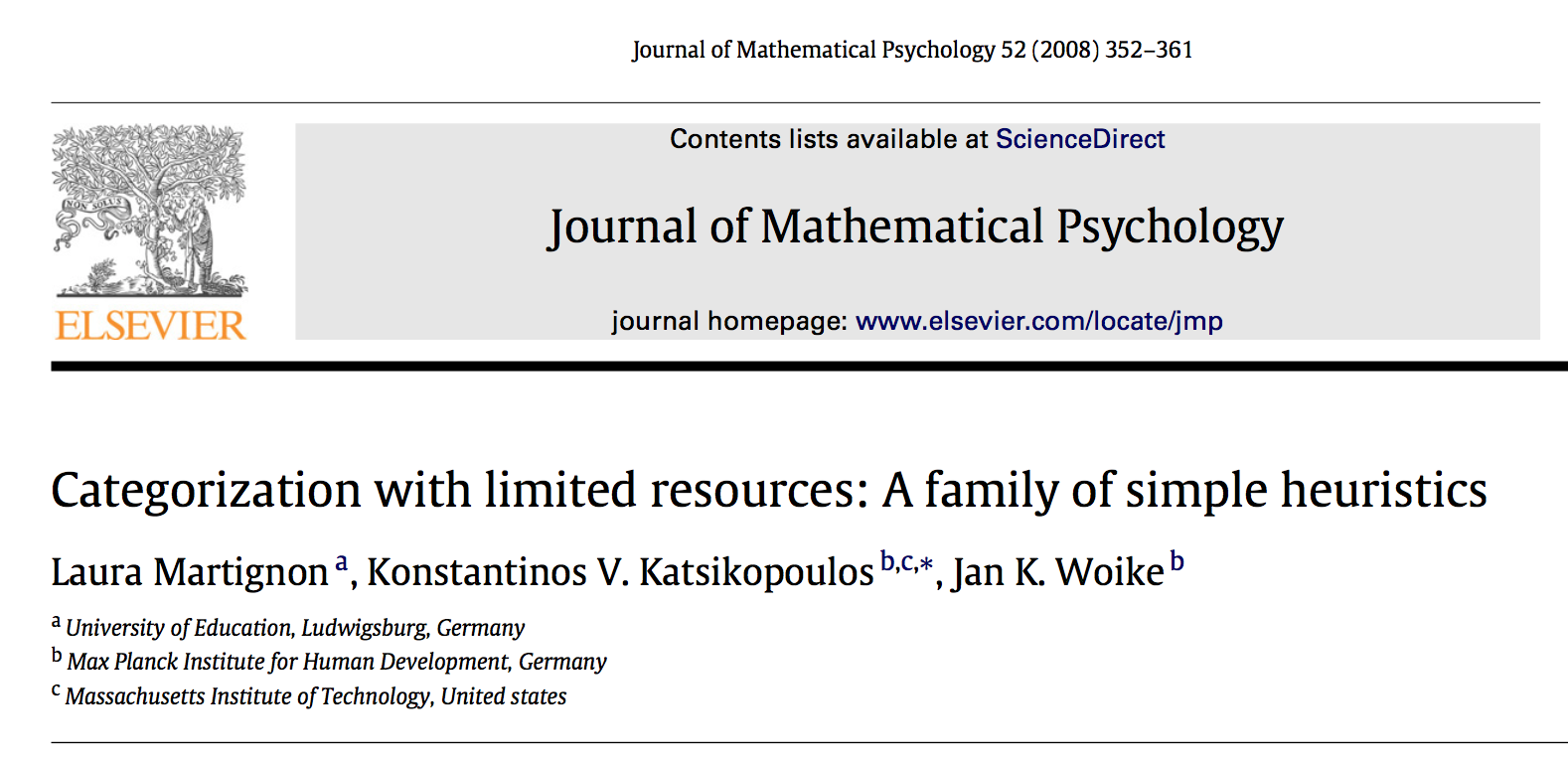
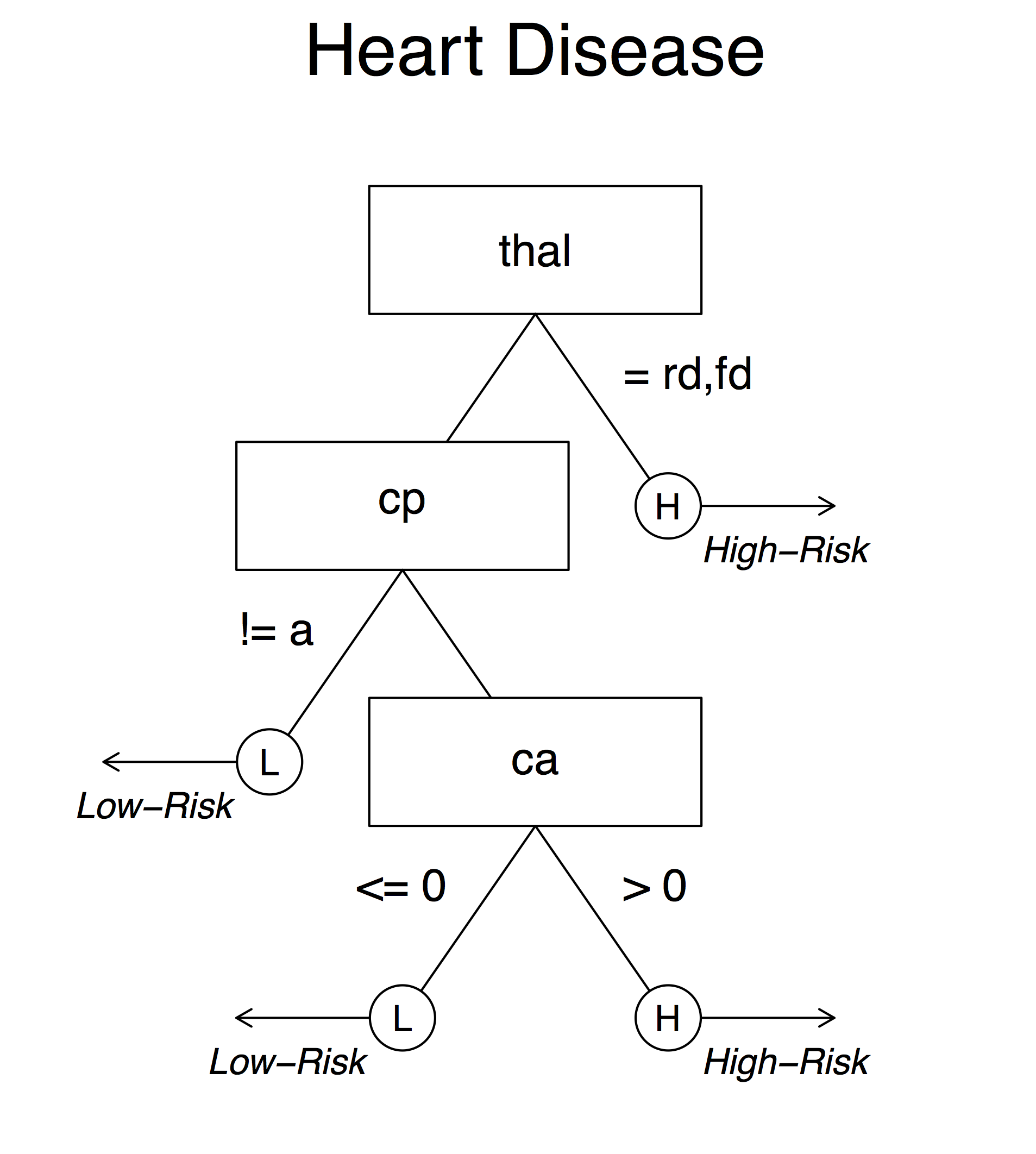
Examples of FFTs
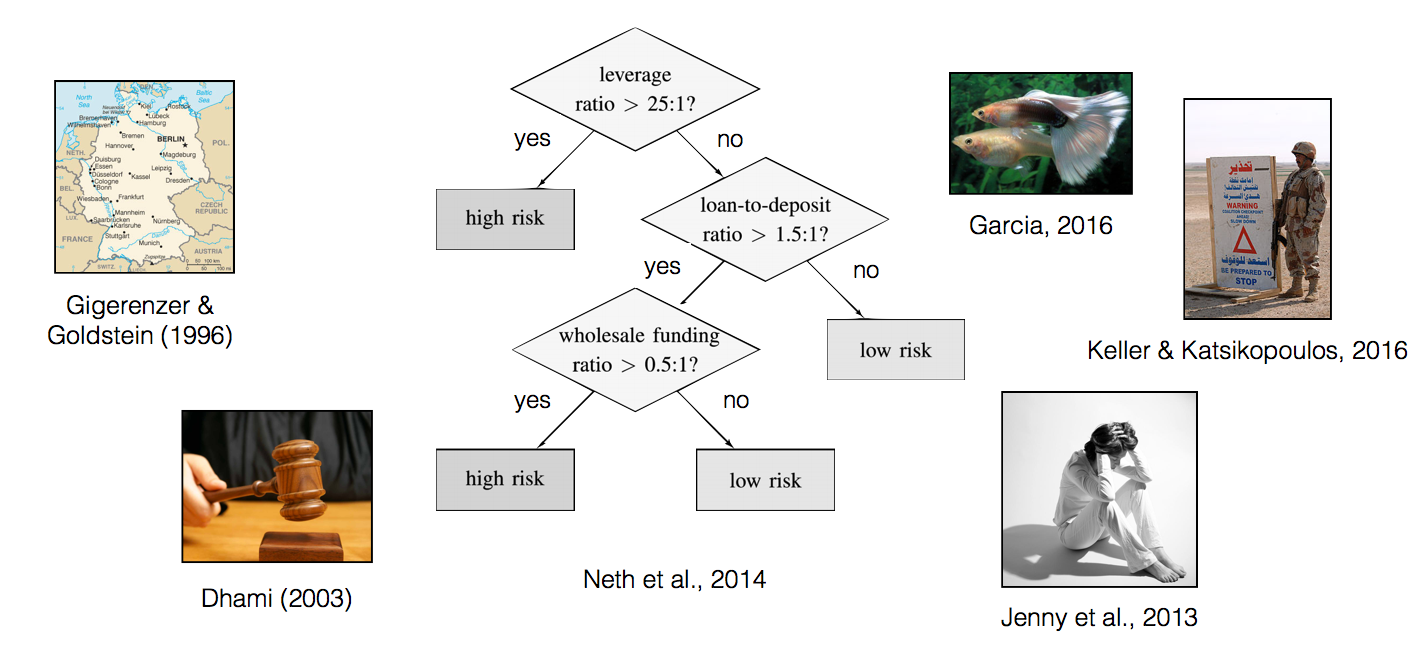
But how can I create FFTs?
- Need an algorithm (and preferably software)
| Algorithms | Software | |
|---|---|---|
| Standard Decision Trees | CART, C4.5, CHAID | SPSS, Excel, R, Matlab, ... |
| Fast-and-Frugal Trees (FFTs) | Max, Zig-zag (Martignon et al., 2003; 2008) | ? |
Missing: An easy to use toolbox that creates and visualizes FFTs based on data.
Answer: FFTrees
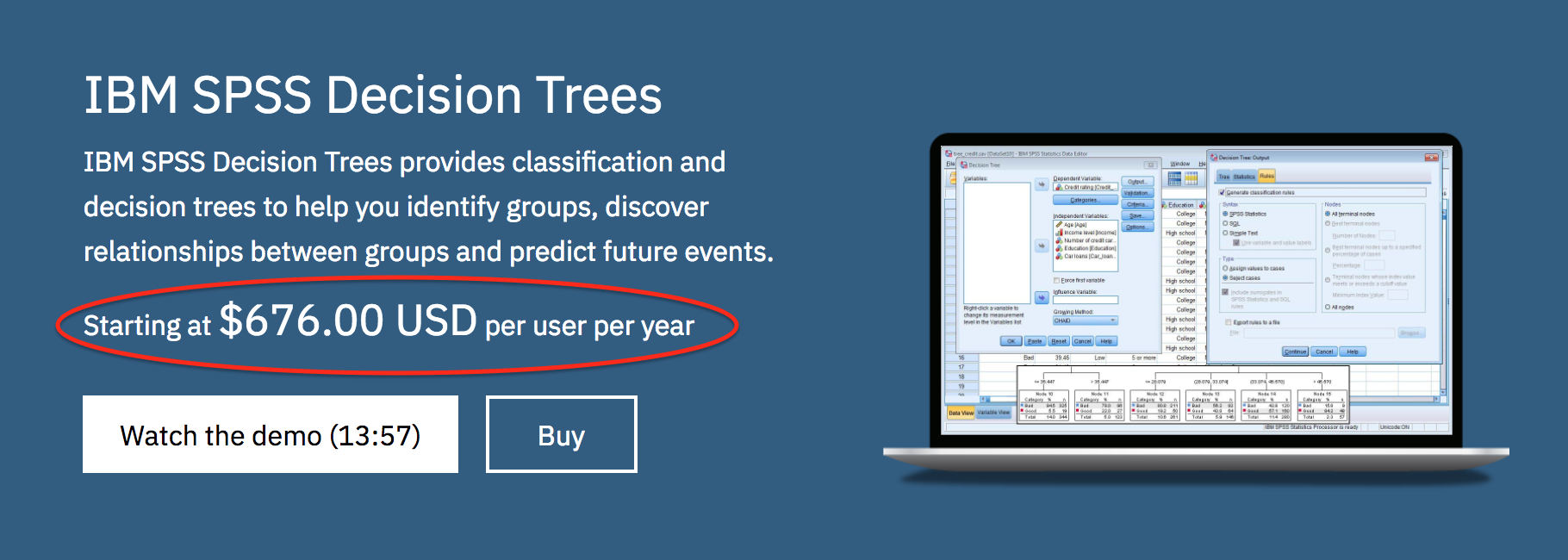
If you don't like things for free (R), you can pay IBM SPSS $680 / year to make standard decision trees.
FFTrees
- A toolbox to create fast-and-frugal decision trees (FFTs).
- FFTs that either Describe decision processes 'in the lab' or Prescribe decision strategies 'in the field'.
- Minimal to no programming, extensive examples and guides.
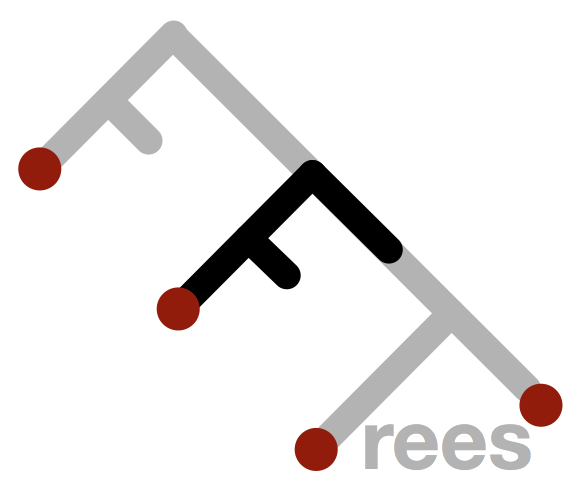
Tutorial and Documentation
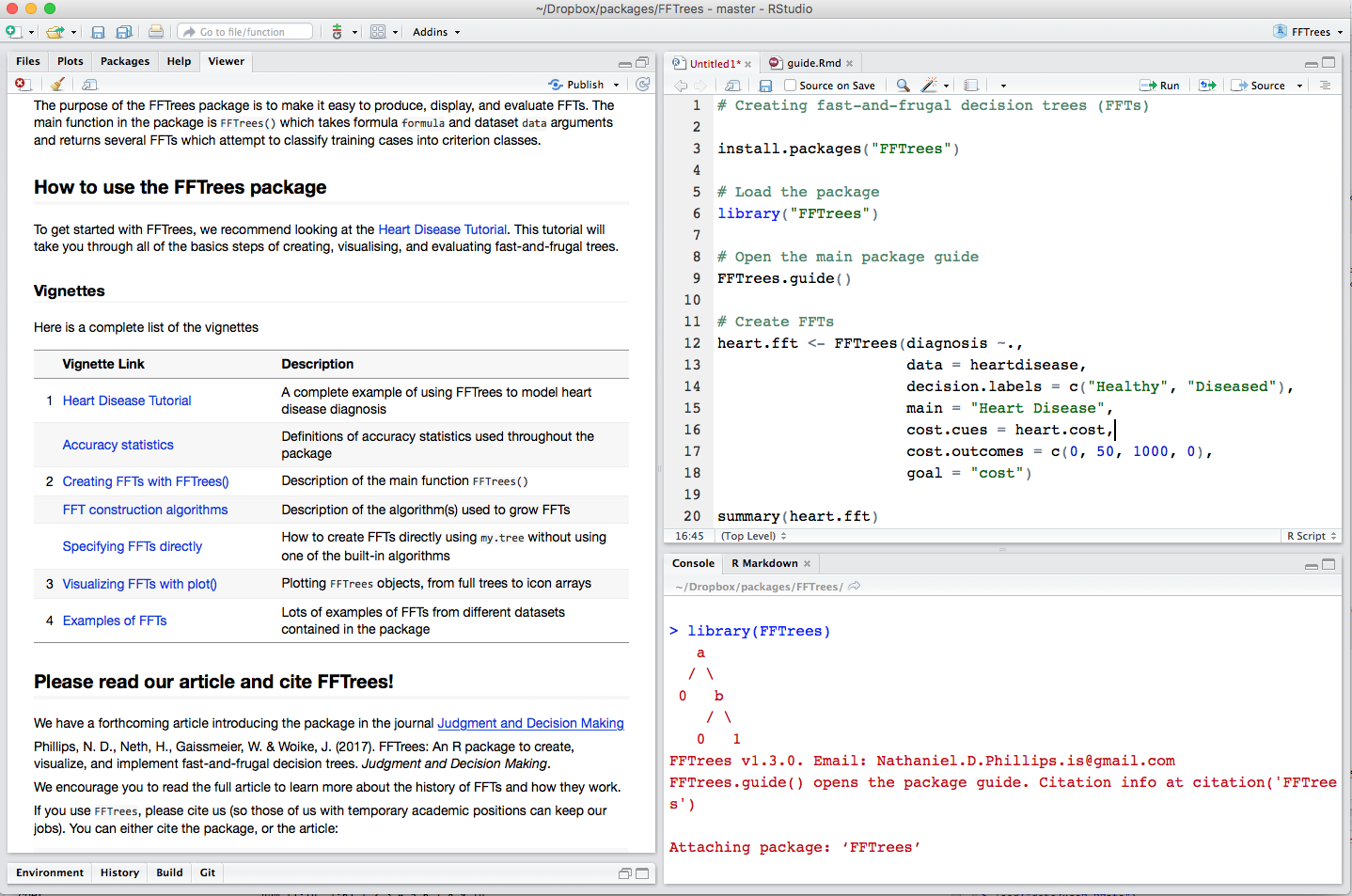
Example: Heart Disease
| age | sex | cp | trestbps | chol | fbs | restecg | thalach | exang | oldpeak | slope | ca | thal | diagnosis |
|---|---|---|---|---|---|---|---|---|---|---|---|---|---|
| 63 | 1 | ta | 145 | 233 | 1 | hypertrophy | 150 | 0 | 2.3 | down | 0 | fd | 0 |
| 67 | 1 | a | 160 | 286 | 0 | hypertrophy | 108 | 1 | 1.5 | flat | 3 | normal | 1 |
| 67 | 1 | a | 120 | 229 | 0 | hypertrophy | 129 | 1 | 2.6 | flat | 2 | rd | 1 |
| 37 | 1 | np | 130 | 250 | 0 | normal | 187 | 0 | 3.5 | down | 0 | normal | 0 |
| 41 | 0 | aa | 130 | 204 | 0 | hypertrophy | 172 | 0 | 1.4 | up | 0 | normal | 0 |
| 56 | 1 | aa | 120 | 236 | 0 | normal | 178 | 0 | 0.8 | up | 0 | normal | 0 |
Goal: Predict binary diagnosis classification
The FFTrees() function
# Step 1: Install and load FFTrees (v.1.3.2)
install.packages("FFTrees")
library("FFTrees")
# Step 2: Create FFTs
heart.fft <- FFTrees(formula = diagnosis ~., # Formula
data = heart.train, # Training data
data.test = heart.test, # Test data
main = "Heart Disease", # Optional labels
decision.labels = c("Low-Risk", "High-Risk"))
Print an FFTrees object
heart.fft
Heart Disease
7 FFTs predicting diagnosis (Low-Risk v High-Risk)
FFT #1 uses 3 cues: {thal,cp,ca}
train test
cases :n 150.00 153.00
speed :mcu 1.74 1.73
frugality :pci 0.88 0.88
accuracy :acc 0.80 0.82
weighted :wacc 0.80 0.82
sensitivity :sens 0.82 0.88
specificity :spec 0.79 0.76
pars: algorithm = 'ifan', goal = 'wacc', goal.chase = 'bacc', sens.w = 0.5
Plot individual cue accuracies
plot(heart.fft, what = "cues")

Print a tree "in words"
inwords(heart.fft)
[1] "If thal = {rd,fd}, predict High-Risk"
[2] "If cp != {a}, predict Low-Risk"
[3] "If ca <= 0, predict Low-Risk, otherwise, if ca > 0, predict High-Risk"
| cue | definition | Possible values |
|---|---|---|
| thal: thallium scintigraphy | How well blood flows to the heart | normal (n)fixed defect (fd), or reversible defect (rd) |
| cp: chest pain type | Type of chest pain | typical angina (ta), atypical angina (aa), non-anginal pain (np), or asymptomatic (a). |
| ca: | number of major vessels colored by flourosopy | 0, 1, 2, 3 |
plot(heart.fft, stats = FALSE, data = "test")

plot(heart.fft, data = "test") # Training data


plot(heart.fft, data = "test", tree = 6) # Testing data, tree 6

plot(heart.fft, data = "test", tree = 7) # Testing data, tree 7

Additional features
- Choose a tree building algorithm.
- Max, zig-zag, ifan, dfan
- Specify a tree directly 'in words'
my.tree =
'If age > 50, predict FALSE.
If sex = {m}, predict TRUE.
If ca > 1, predict TRUE, otherwise, FALSE')
- Give differential weight to sensitivity (avoiding misses) and specificity (avoiding false-alarms)
Incorporate cue costs in evaluating and/or building trees.
Create a 'forest' of FFTs

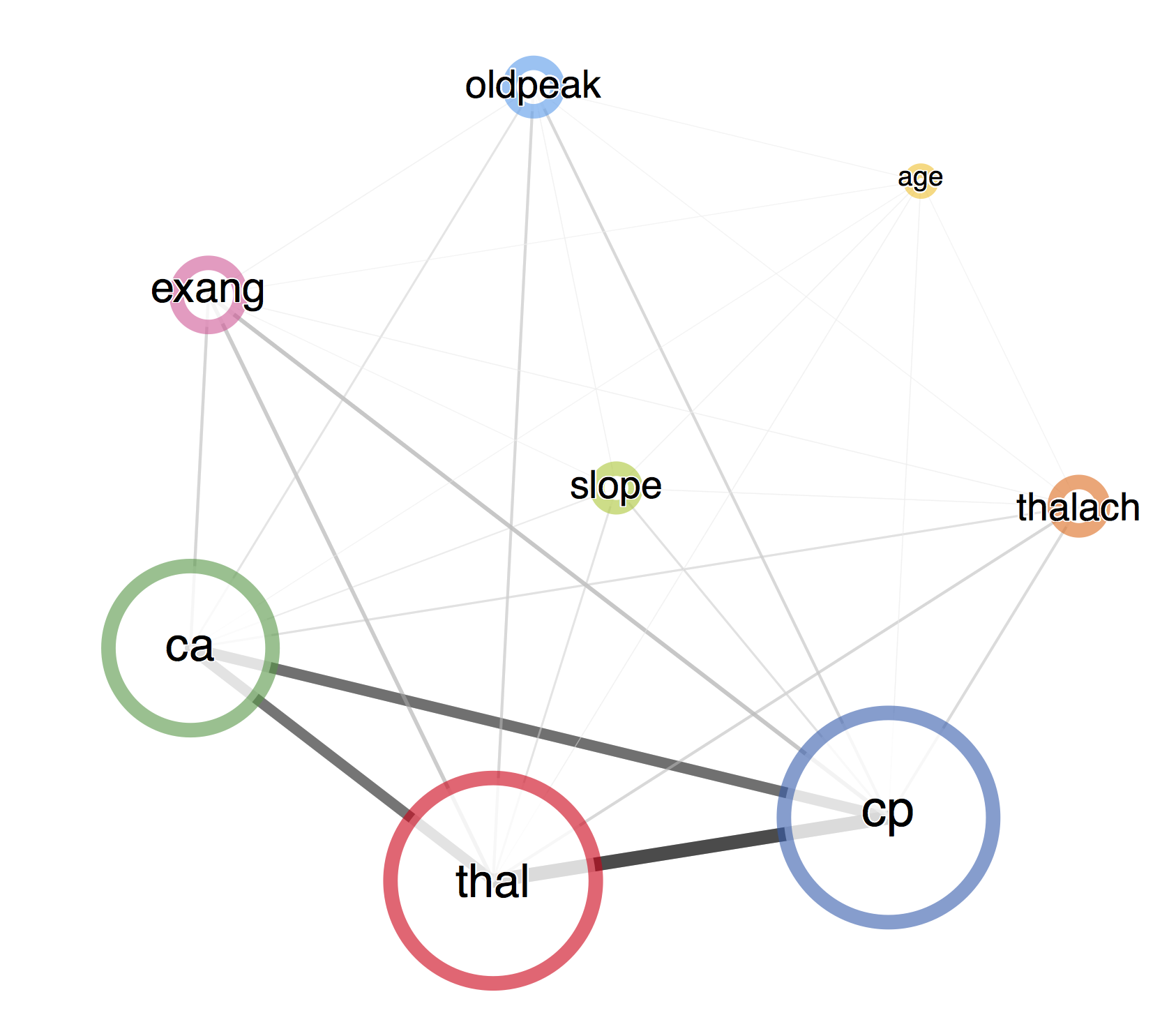
ShinyFFTrees
- A point-and click (no programming), web-based version of FFTrees with around 90% of the funcionality of FFTrees
- Link: http://econpsychbasel.shinyapps.io/ShinyFFTrees/
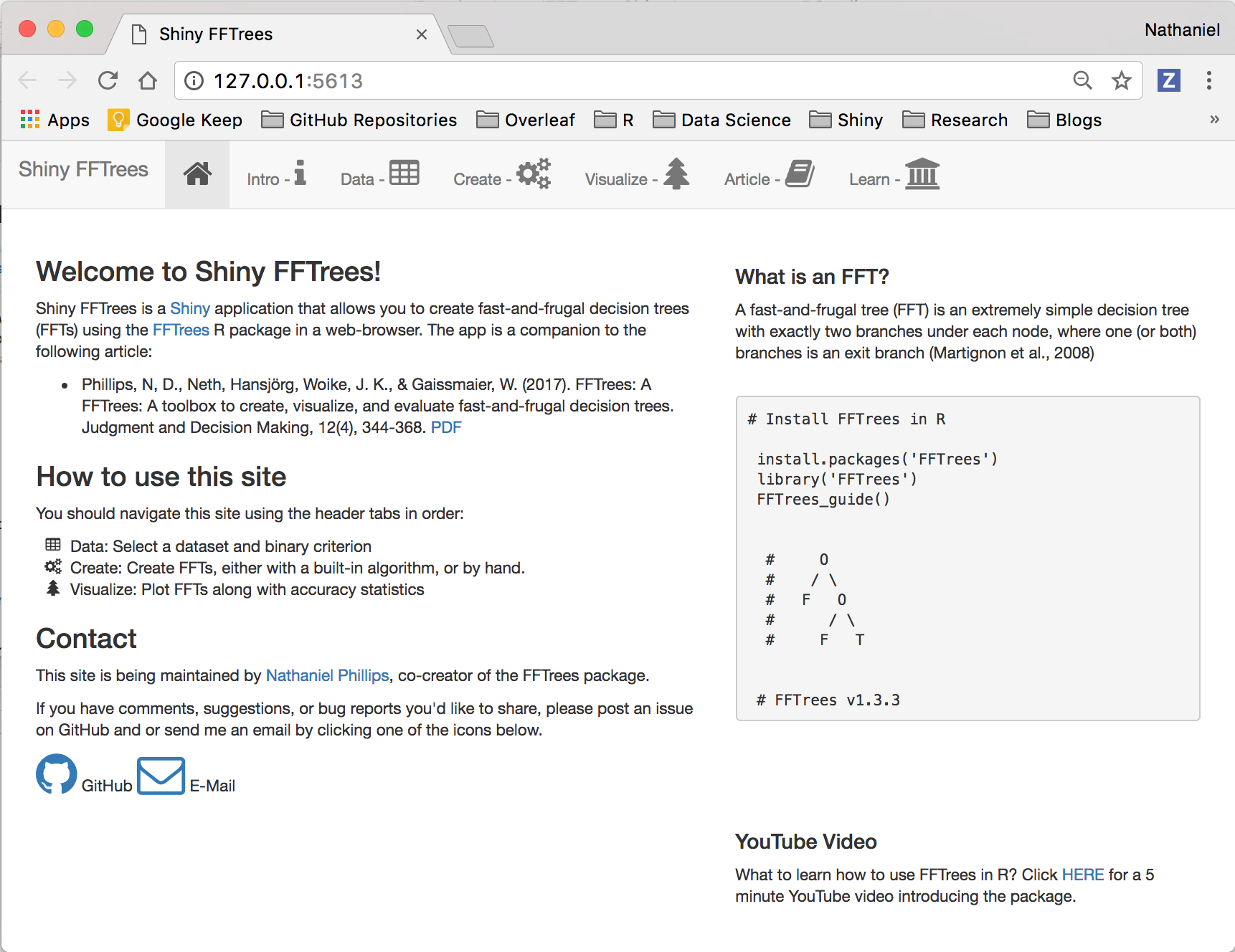
How well can simple FFTs compete with classical rational models and cutting-edge machine learning algorithms?
Prediction Simulation
- 10 datasets from the UCI Machine Learning Database.
- 50% Training, 50% Testing
- Created FFTs with the 'ifan' algorithm (Phillips et al. 2017)
- FFTrees vs rpart, regression, random forests...
- Criterion: Balanced accuracy
mean(sensitivity, specificity)

Speed and frugality

Speed and frugality

Fitting Accuracy

Prediction Accuracy

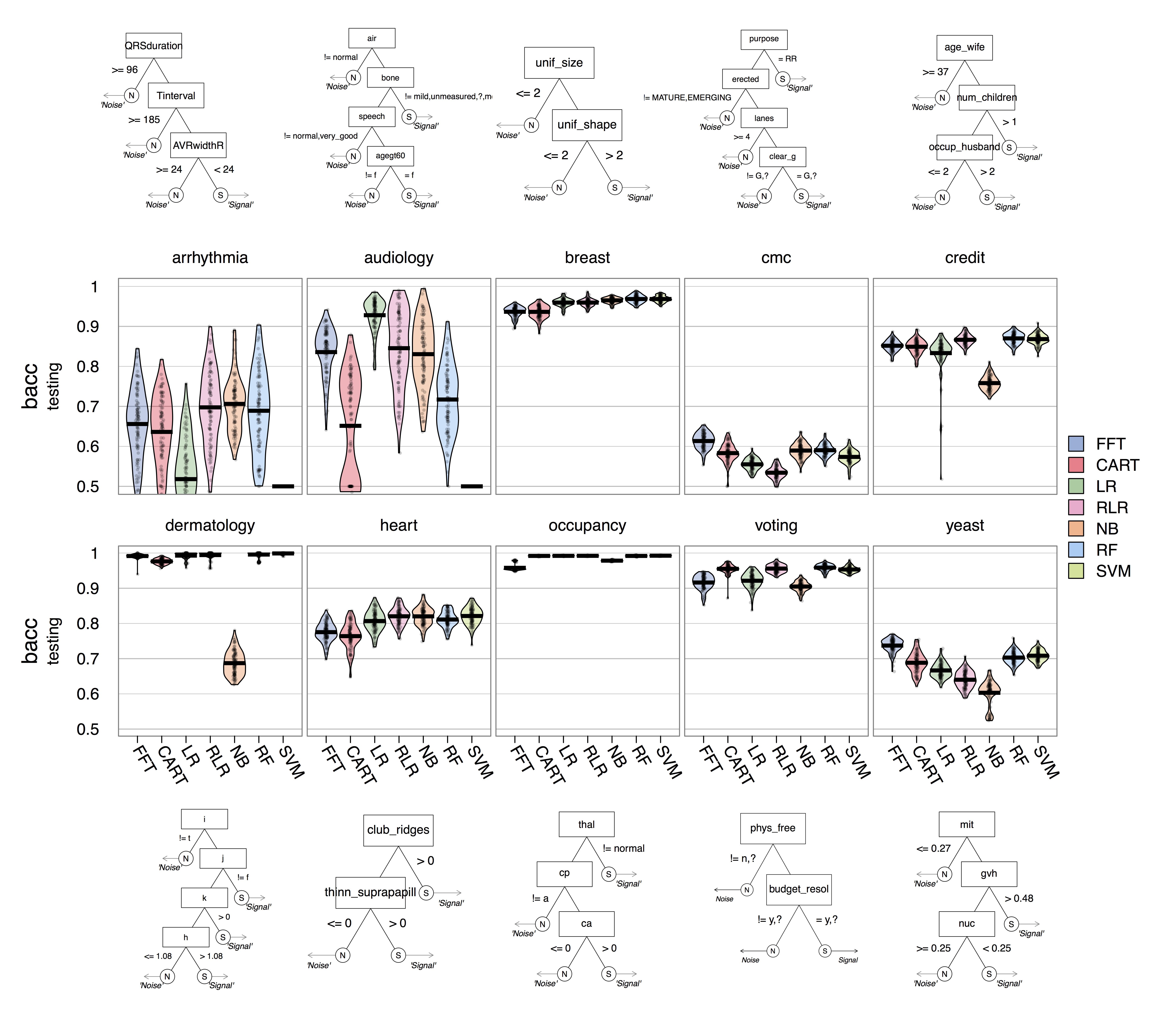
How I learned to stop worrying and love heuristics






Publication and Collaborators
FFTrees: A toolbox to create, visualize and evaluate fast-and-frugal decision trees. (2017). Judgment and Decision Making, 12(4), 344-368.
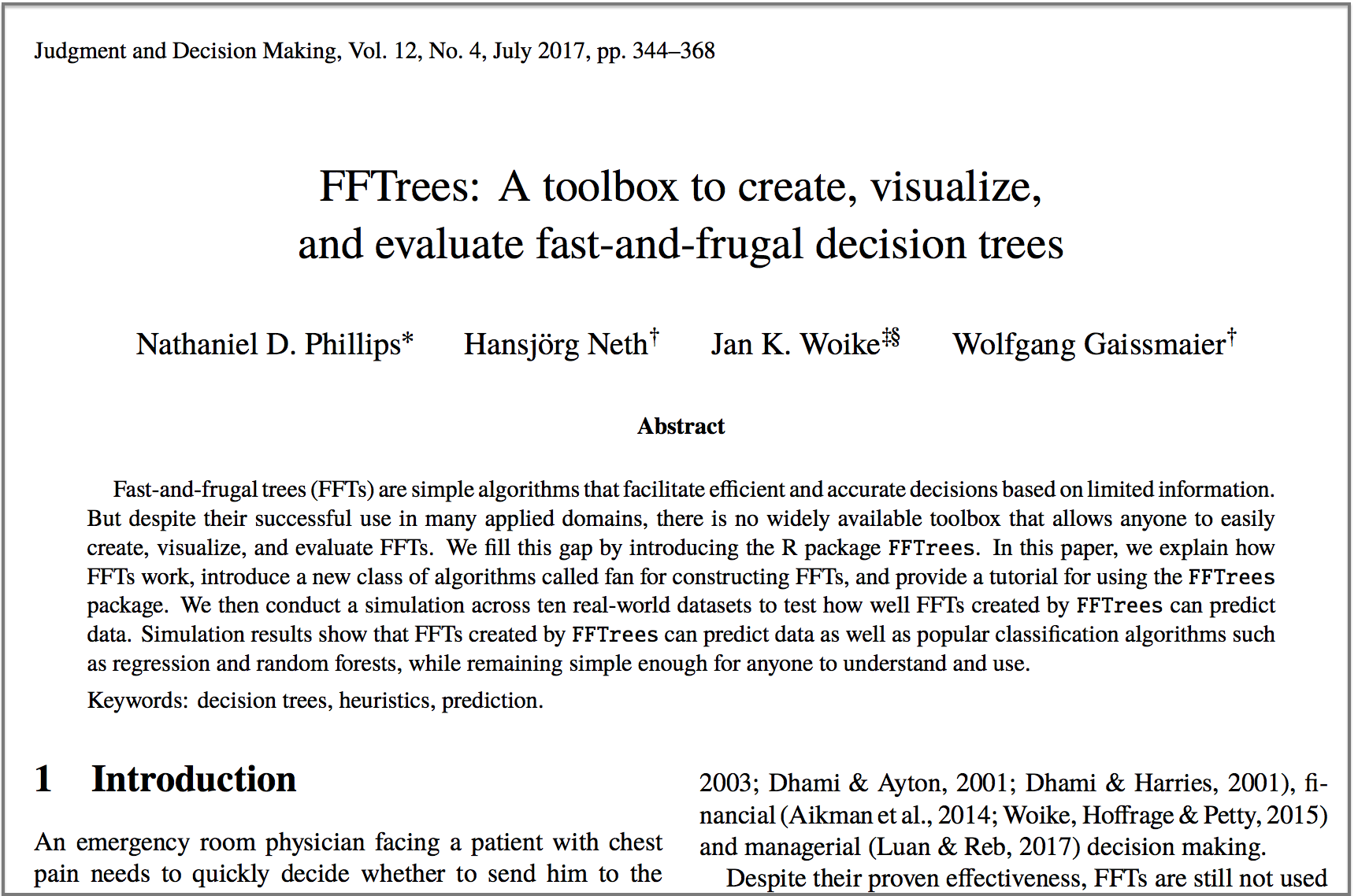


install.packages("FFTrees") # Install FFTrees from CRAN
library("FFTrees") # Load FFTrees
FFTrees_guide() # Open the main package guide
- Manuscript: FFTrees: A toolbox to create, visualize and evaluate fast-and-frugal decision trees. Judgment and Decision Making
- This presentation: https://ndphillips.github.io/spudm2017haifa/
- Github Repository: http://www.github.com/ndphillips/FFTrees
- ShinyFFTrees: http://econpsychbasel.shinyapps.io/ShinyFFTrees/
- Email: Nathaniel.D.Phillips.is@gmail.com
FFTrees Unfriendly Data
- Many cues, weak validity, ind errors

FFTrees Friendly Data
- Few cues with high validity, dep errors.

Cue importance
- As calculated by
randomForest

Tree Building Algorithm
- For each cue (aka, feature), calculate a threshold that maximizes
goal.chase(default: balanced accuracy) - Rank order cues by
goal.chase - Select the top
max.levels(default: 4) - Create a "fan" of all possible trees with all possible exit directions.
- Select the tree that maximizes
goal(default: balanced accuracy)

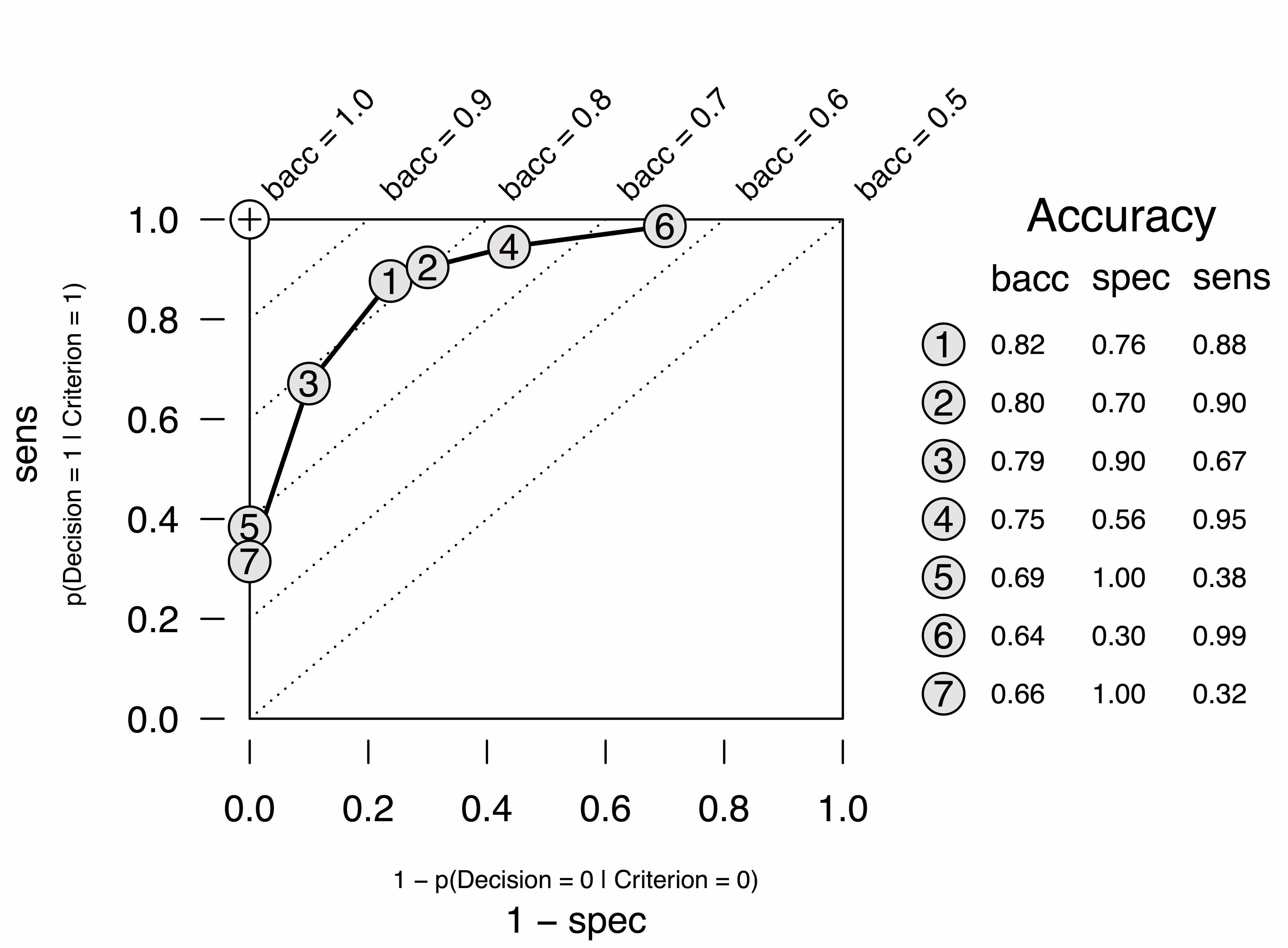
How accurate can FFTs be?

How accurate can FFTs be?

Conclusion
Why use FFTrees?
- See how, and how well, a crazy simple, transparent fast-and-frugal tree can make sense of your data.
- You might be surprised by how well it works, and generate new insights.
library("FFTrees")
a
/ \
0 b
/ \
0 1
FFTrees v1.3.2

Create a forest of FFTs
heart.fff <- FFForest(formula = diagnosis ~., data = heartdisease)
